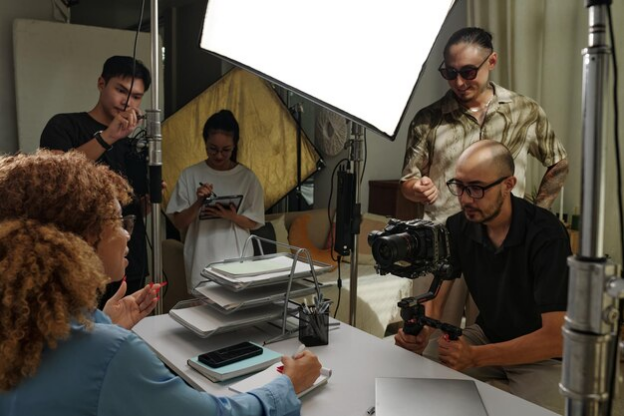Creating a documentary does not just require an idea and a camera. Before films can be made, real-life stories must be cast in reality. There are overarching steps that need to be completed ranging from formulating a plan, gathering information, and completing final edits. If you’ve ever wondered how documentaries are made click here to discover the process behind the scenes.

The Pre-Production Phase
Most writers start with filming. A plan must be created, which includes:
- Choosing a Topic: A captivating topic must be chosen for a reader to grasp their attention, learn something, and keep them interested. With this in mind, the filmmakers do background research to aid in creating a solid topic.
- Script Development: Documentaries are based on real events. Nonetheless, an outline helps the filmmaker remain organized while telling the story.
- Securing Permissions: Access to the footage and information must be provided beforehand. Documentaries undergo interviews, access to places including archived add-ins. Permissions become necessary.
- Budget Planning: To aid with expenses, funds are needed. This can stem from sponsors, crowdfunding, or grants.
- Assembling a Team: A standard crew will usually involve a research team, editor, director, and cinematographer.
The Filming Process in Documentaries
Creating an authentic narrative for documentaries includes multi-tasking, which consists of capturing interviews, real-life events, and tapes. After the planning phase is completed, filming can finally commence.
Conducting Interviews
When it comes to storytelling, interviews are an important element. For instance, filmmakers often incorporate interviews by including experts and even ordinary people who deeply relate to the subject matter and who can vividly tell the story as is.
Capturing Authentic Moments
Unlike scripted films, documentaries depend on real moments. Documentary filmmakers use techniques of observation to capture events as they occur.
Using Cinematic Techniques
Professional documentaries make use of trained cinematography skills like:
- B-roll footage to provide context
- Drone shots for aerial views
- Slow motion for dramatic effect
- Close-ups to highlight emotions
The Post-Production Process
After filming, the collected raw footage is edited to create a story that captivates audiences. The following is achieved during this phase:
Editing the Footage
Editors sift through hours of footage to piece together a cohesive story. This involves trimming clips, arranging sequences, and adding transitions for smooth flow.
Adding Narration and Sound Effects
For documentaries, they usually enhance basic features such as animations and archivals to transform the data and interest into informative material.
Including Graphics and Visuals
Documentaries often use animations, text overlays, and archival footage to present data and historical context in an engaging way.

Distribution and Promotion
After a documentary is made, filmmakers follow the below steps to distribute and promote it:
- Film Festivals: Gaining recognition and promoting distribution deals can be achieved by showcasing documentaries at festivals.
- Streaming Platforms: These services such as Netflix, Amazon Prime, and Youtube provide access to a global audience for the streaming of documentaries.
- Television Broadcasts: Numerous documentaries can be found on National Geographic, BBC, and PBS.
- Social Media Promotion: Filmmakers utilize social media platforms to promote their work and engage with their audience.
The Impact of Documentaries
Create awareness of significant issues, motivating action, challenging perspectives, educate, and inspiring is part of the power that documentaries have. Covering topics such as social justice, history, science, personal stories, or any important issue will always show that they remain a powerful tool for storytelling.
Rewarding is the type of consuming process that creates a documentary. Documentaries undergo thorough research, filming, editing, distributing, and many more steps that play a crucial role in making a polished documentary. The next time you sit down to enjoy a documentary, you can appreciate the effort and dedication that goes on behind the scenes.

